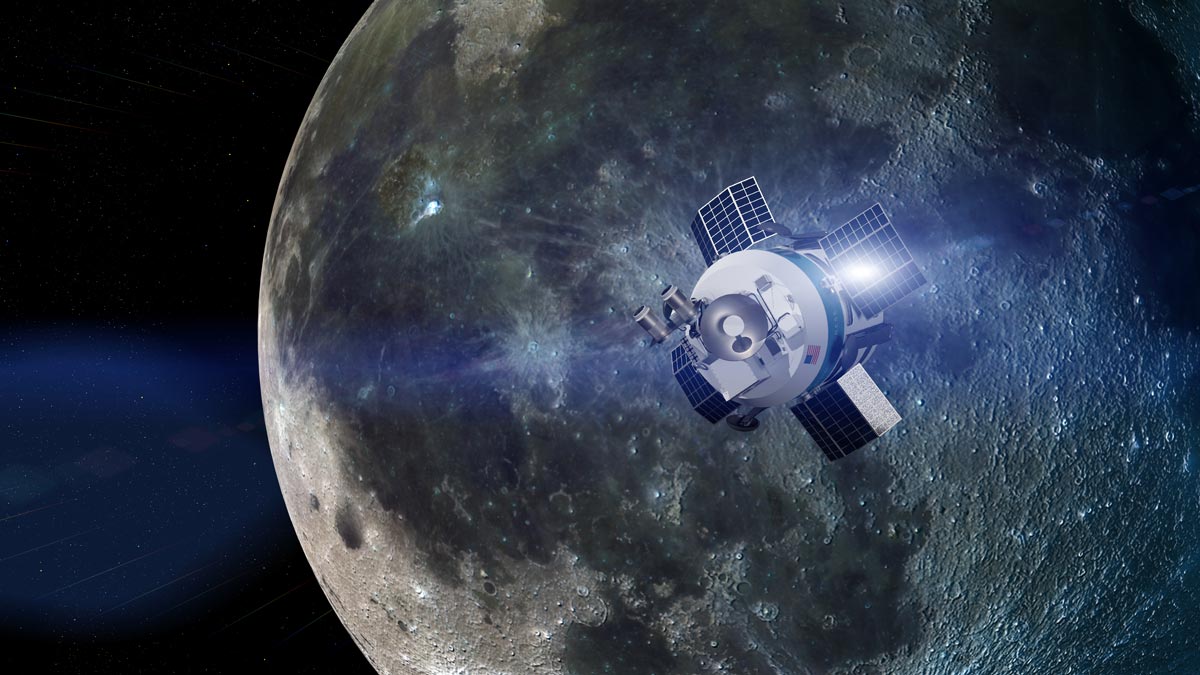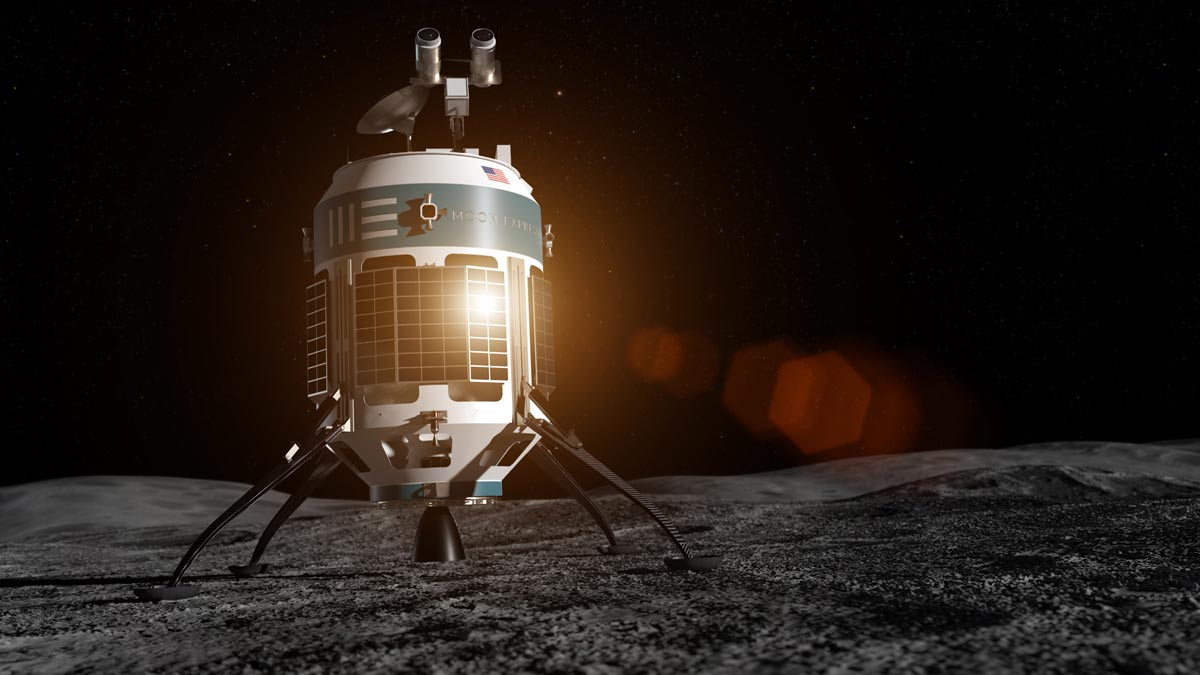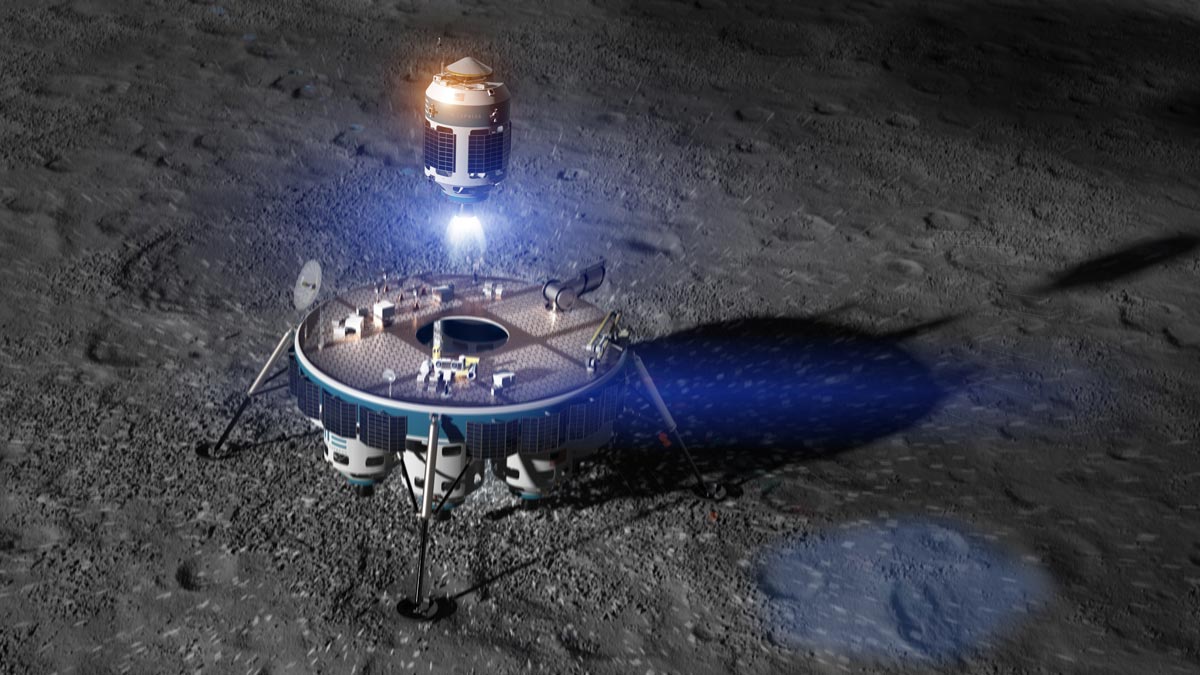Moon Express Unveils Plan to Help Explore Solar System on a 'Grand Scale'
The quest to win a $30 million race to the moon is just the first part of Moon Express' grand plan.
The Florida-based company is developing an entire family of spacecraft designed to help usher in a new age of low-cost space exploration, from the moon to Mars and beyond, Moon Express representatives revealed today (July 12).
"That's where my heart is — solar system exploration on a grand scale that democratizes and completely accelerates our evolution into the solar system through knowledge and discovery, not just a few expensive voyages sponsored by kings and governments, like in history," Moon Express CEO and co-founder Bob Richards told Space.com. "We need to get everybody going." [In Images: How Moon Express' Space Exploration Plan Works]

Shooting for the moon
As its name suggests, Moon Express' vision starts with Earth's nearest neighbor. The company is one of five teams left in the Google Lunar X Prize (GLXP) competition, which will award $20 million to the first privately funded group to soft-land a robot on the moon, move it at least 1,640 feet (500 meters) across the lunar surface and beam high-resolution imagery and video back to Earth. (Prizes for several other accomplishments bring the total purse up to $30 million.)
The GLXP award will expire if nobody claims it by Dec. 31, 2017. Moon Express has signed a contract to fly its lander aboard Rocket Lab's new Electron booster but has yet to announce a launch date.
The two-stage Electron lifted off for the first time in late May. The maiden voyage was a partial success; the rocket's second stage failed to reach its desired orbit, according to Rocket Lab representatives.
Get the Space.com Newsletter
Breaking space news, the latest updates on rocket launches, skywatching events and more!
"I think that first test flight bodes very well for Rocket Lab, and we're still rooting for them and hoping that they'll have an operational vehicle ramped up and ready for us by the end of the year," Richards said.

Big plans
The GLXP mission won't be the last lunar voyage for Moon Express, if all goes according to plan. Its deal with Rocket Lab covers up to five launches, and Moon Express wants at least two more to occur in the next few years, Richards revealed during a news conference today.
The first post-GLXP mission, scheduled to launch in 2019, will set up a robotic research outpost near the lunar south pole and prospect for water and other resources. Then, in 2020, Moon Express will launch the first commercial lunar sample-return mission. That effort, Richards said, should prove out the company's technologies and its business model, which is centered around creating low-cost access to the moon's surface for a variety of customers.
The core piece of hardware to make all of that happen is a single-engine lander called the MX-1, which will launch on the GLXP flight. Moon Express aims to mass-produce the MX-1, sell it as a stand-alone lunar explorer and have it serve as a building block for three larger, more capable spacecraft — the MX-2, the MX-5 and the MX-9, Richards said today.
The MX-2 combines two MX-1s into a single package, boosting the MX-1's payload capacity in Earth-moon space and potentially enabling missions to Venus or the moons of Mars. As their names suggest, the MX-5 and MX-9 incorporate five engines and nine engines, respectively, and broaden the exploration envelope even further, Richards said.
All of these spacecraft will be available in orbiter, lander and deep-space variations, and the MX-5 and MX-9 vehicles will also come in a sample-return configuration.

Moon Express has not revealed how much it will charge for any of these spacecraft. However, company representatives have said that, together, the MX-1 and Electron can deliver a lunar mission for less than $10 million (that's "cost," not retail). Electron flights currently sell for about $5.5 million apiece, putting the lander's raw cost at $4.5 million or less.
Therefore, the potential exists to cut space-exploration costs significantly — for example, by an order of magnitude or so on MX-9 missions, Richards said.
"That's when you get a radical price reduction — a collapse, really, of the costs down to hundreds of thousands of dollars a kilogram [of payload to the lunar surface] from the millions that it is today for smaller systems," he told Space.com. "I really hope that we're able to do for lunar access what cubesats did for access to low Earth orbit."
The moon is the focus in the short term, but the company hopes its reach will expand as time goes on.
"We're not The Moon Express," Richards said. "We're Moon Express, so any moon will do."
Follow Mike Wall on Twitter @michaeldwall and Google+. Follow us @Spacedotcom, Facebook or Google+. Originally published on Space.com.
Join our Space Forums to keep talking space on the latest missions, night sky and more! And if you have a news tip, correction or comment, let us know at: community@space.com.

Michael Wall is a Senior Space Writer with Space.com and joined the team in 2010. He primarily covers exoplanets, spaceflight and military space, but has been known to dabble in the space art beat. His book about the search for alien life, "Out There," was published on Nov. 13, 2018. Before becoming a science writer, Michael worked as a herpetologist and wildlife biologist. He has a Ph.D. in evolutionary biology from the University of Sydney, Australia, a bachelor's degree from the University of Arizona, and a graduate certificate in science writing from the University of California, Santa Cruz. To find out what his latest project is, you can follow Michael on Twitter.









